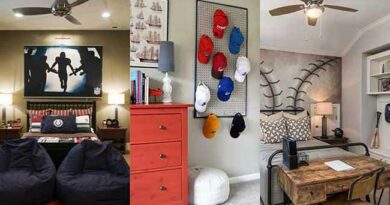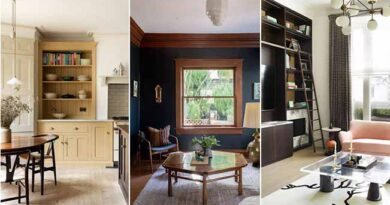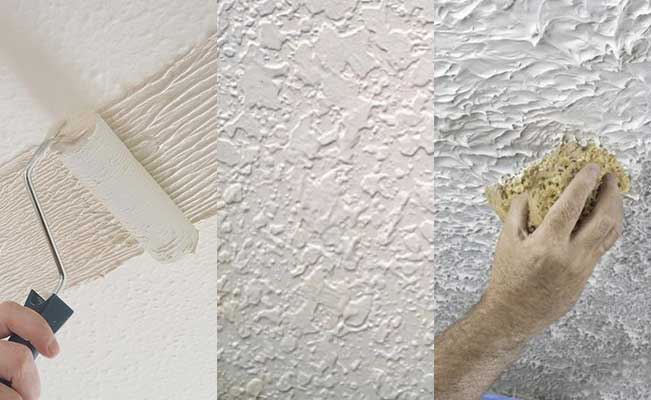Why You Need Deck Skirting: Pros and Cons + 40 Cheap Creative Ideas
Ever thought about jazzing up your outdoor space with deck skirting? It’s a neat way to give your deck some character. With cool designs and materials, you can make your deck match your home and garden perfectly.
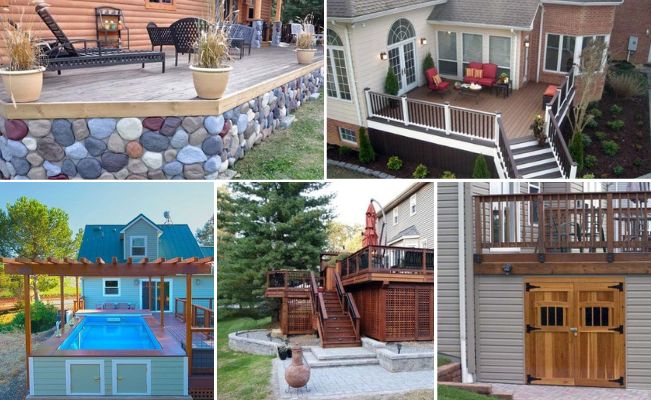
Stick around as we dive into some fun deck skirting ideas to make your deck stand out! And hey, we’ll also answer some burning questions like: Can you add deck skirting after your deck is built? How much does it cost to install deck skirting? Plus, find out how deck skirting can keep pesky critters out of your yard! Oh, and if you’re wondering, what’s deck skirting all about and why do you even need it? We’ve got you covered! Let’s get started!
What’s Deck Skirting?
Deck skirting is like a cozy jacket for your deck—it wraps around the bottom part. Made from wood, vinyl, or metal, it’s all about adding style while keeping things tidy. Think of it as a decorative barrier that hides the space under your deck, making it look neat and protected from critters and bad weather. Plus, it’s a handy spot to stash your outdoor stuff, like lawncare tools or pool gear.
Let’s take a look at both sides of the coin to help you make a well-informed decision.
Pros of Deck Skirting:
Enhanced Aesthetics: Deck skirting adds a polished appearance to your outdoor space by enclosing the area under your deck. It can be customized to match your deck’s design, elevating the overall look of your home.
Concealing Unattractive Areas: Deck skirting hides unsightly structural elements like support beams and wires, creating a clean and uniform look.
Pest Control and Safety: By enclosing the underside of your deck, skirting acts as a barrier against pests and provides added safety for children and pets.
Cons of Deck Skirting:
Reduced Ventilation: Closing off the space under your deck may limit airflow, potentially leading to moisture buildup and related issues like mold and mildew.
Limited Accessibility: Maintenance and repairs may be more challenging with deck skirting in place, requiring extra effort to access the underside of the deck.
Deciding whether to install deck skirting depends on your specific needs and preferences. While it enhances aesthetics and promotes pest control and safety, consider the potential drawbacks such as reduced ventilation and accessibility for maintenance.
#1. Decorative and Useful: Lattice Skirting for Your Deck
Ever admired those charming crisscross patterns on garden trellises? That’s lattice for you! It’s not just for gardens anymore—it’s a fantastic choice for deck skirting too.
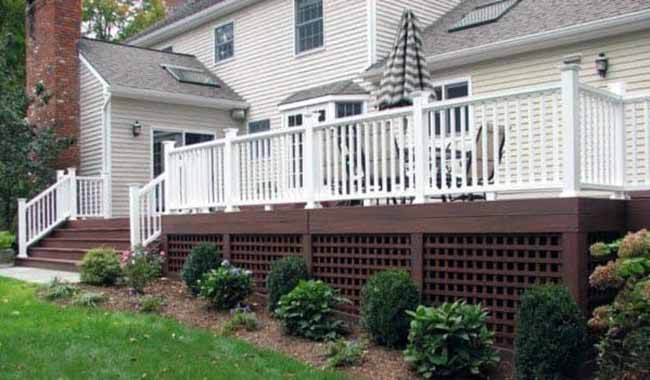
Think of it as a little extra flair for your outdoor space. Lattice brings personality and warmth, giving your deck a cozy, rustic vibe.
Sure, it adds charm, but it also needs some TLC. If you’re not into regular maintenance, you might want to consider vinyl instead.
This lattice skirting isn’t just functional—it’s a style statement. Against the neutral siding of the house, it really pops, adding depth and character to your exterior.
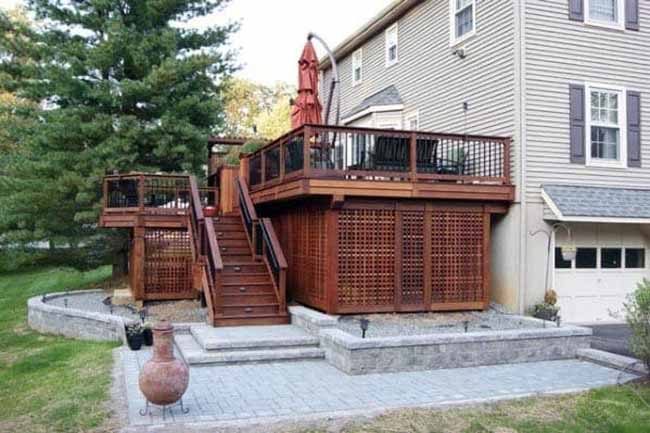
With its dark stain and intricate pattern, this lattice skirting brings a touch of rustic elegance to an otherwise simple design.
Plus, it’s practical too. That space under the deck? Perfect for stashing your garden tools, grill gear, and outdoor furniture.
And let’s talk about that finish. The dark stain against the natural stone ground? It’s like a work of art for your deck.
Deck Skirting Ideas Beyond Lattice
If you’re thinking about alternatives to lattice for your deck skirting, we’ve got plenty of great options to explore.
There are many stylish choices for deck skirting that go beyond traditional lattice. However, it’s important to note that some of these options may require more time, effort, and money to install and maintain. While wood and plastic lattices can be prone to breaking, they are easy to replace and cost-effective. On the other hand, materials like brick, faux stone, and metal are more durable but also more expensive to install. These options often need more expertise or specialized tools. However, once in place, they tend to be long-lasting and require less maintenance.
Below, we highlight some of the best materials for deck skirting, including galvanized metal, expandable PVC trellis, faux stone, decorative metal, and polypropylene panels.
#2. Sleek and Stylish: Modern Deck Skirting Ideas
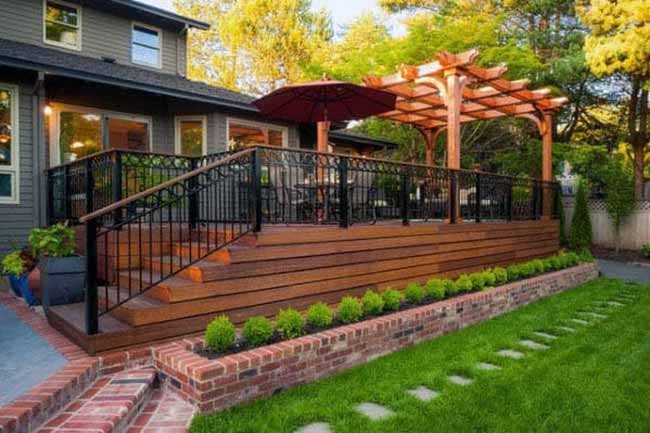
Picture this: clean lines, earthy tones, and a hint of contemporary flair. That’s the modern deck skirting vibe.
Forget traditional materials—think composite, wood, even concrete. It’s all about that sleek, minimalist look.
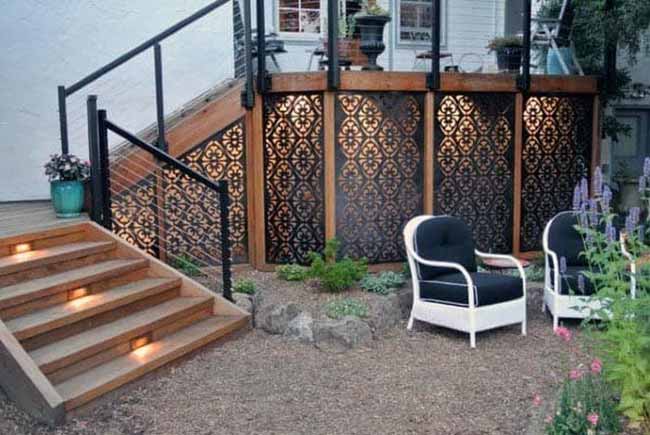
Check out this deck skirting idea with horizontal boards in a deep, earthy hue. Paired with brick stones, wood accents, and metal fencing, it ties everything together seamlessly.
But why stop at simple? Go for decorative panels to amp up your curb appeal. Metal sheets with intricate cutouts, framed in wood—talk about eye-catching.
And don’t forget the details. Metal railings, wooden stairs with built-in LED lights—it’s all about those little touches that make a big impact.
#3. Solid and Timeless: Stone Deck Skirting Inspiration
When durability meets elegance, you get stone deck skirting. It’s sturdy, sophisticated, and built to last.
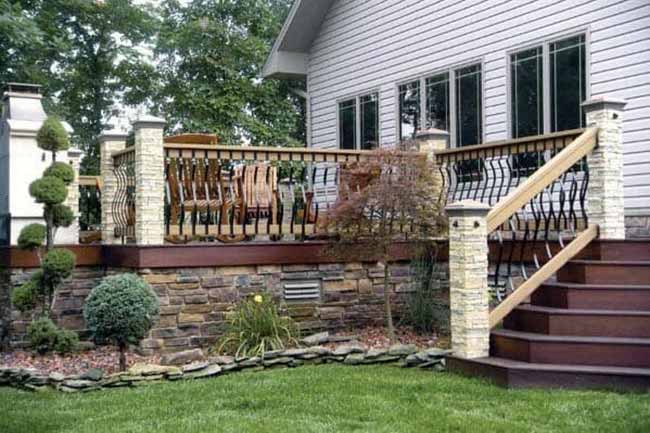
Imagine a deck lined with solid brick or stone—rustic yet refined, bold yet timeless.
Take this backyard patio, for example. Composite wood stairs, stone base, wood and metal railings—all anchored by white brick columns. It’s a harmonious blend of materials that oozes natural charm.
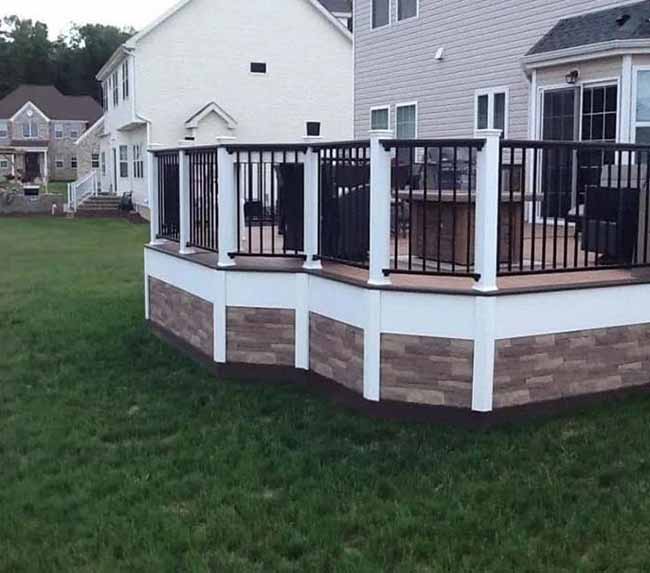
And the symmetry? Perfection. Alternating white wood and grey stone create a striking visual balance.
Add black railings into the mix, and you’ve got yourself a cohesive outdoor oasis.
#4. Industrial Chic: Metal Deck Skirting Ideas
Looking for something durable, low-maintenance, and budget-friendly? Metal deck skirting might be just what you need.
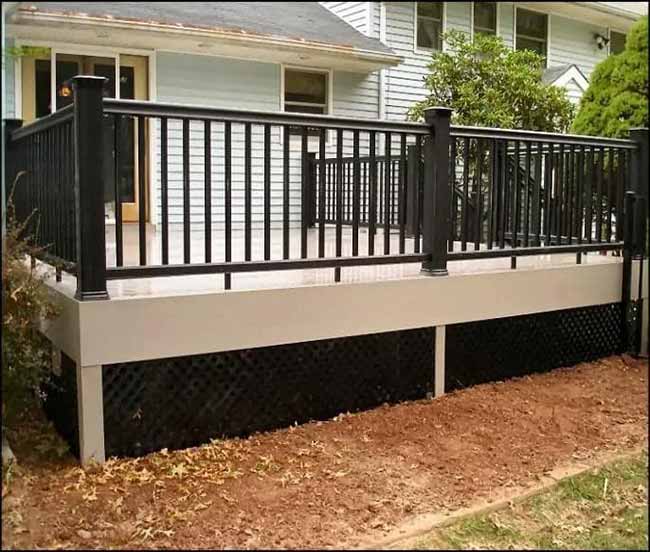
It’s tough enough to withstand the elements, making it a popular choice for outdoor spaces.
Take this metal skirting, for example. It not only adds a layer of protection but also adds a touch of visual interest with its lattice pattern.
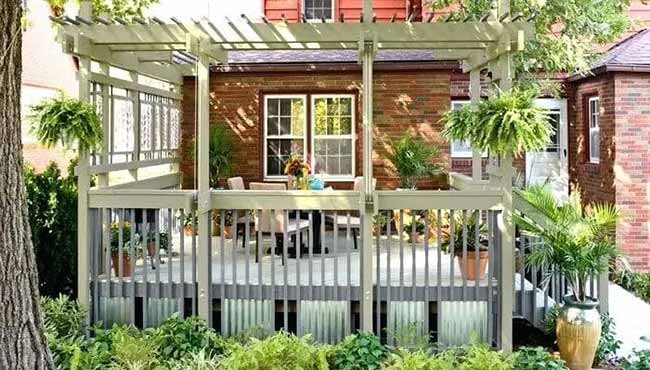
Or how about this combo of metal posts and corrugated sheets? It’s industrial chic at its finest.
And don’t worry about sacrificing ventilation—this skirt keeps things airy while keeping critters out.
With its metallic sheen against a creamy backdrop, it’s a modern twist on traditional deck skirting.
#5 Classic Charm: Wood Deck Skirting Ideas
Fancy getting hands-on with your deck skirt? Scrap wood planks are your go-to. They’re perfect for outdoor use, especially when treated for longevity.
These wood deck skirting ideas? They’re all the rage right now.
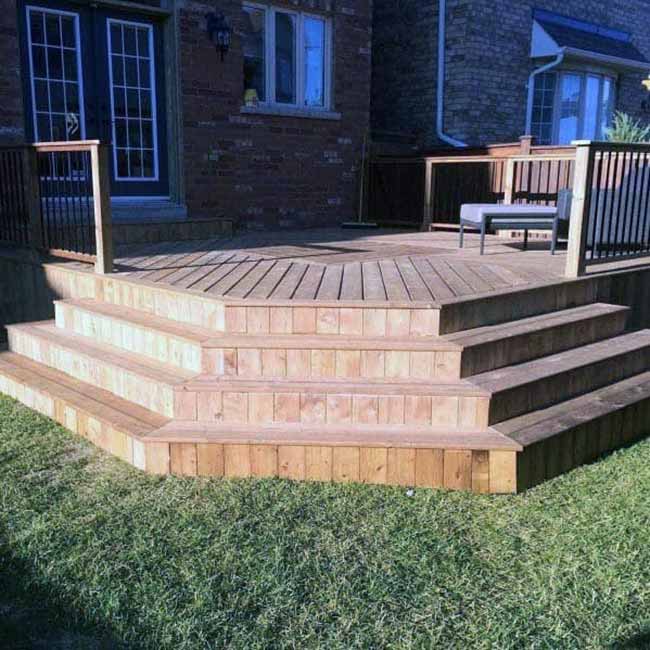
Take this traditional design, for example. Vertical and horizontal wooden planks line the base and staircase, oozing timeless appeal.
And that metal railing? It’s the perfect companion, adding durability and a sleek finish.
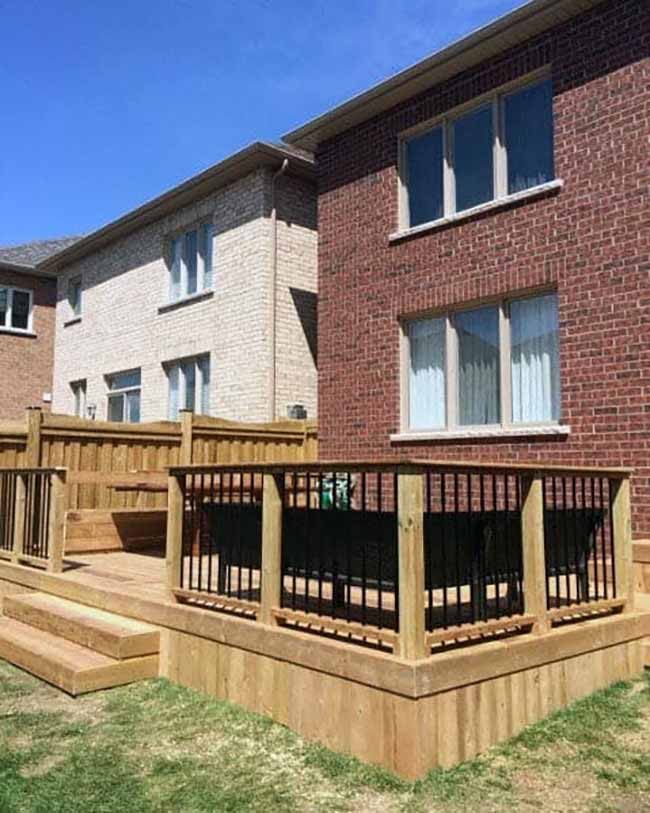
For a seamless look, try this elegant idea. Same wood, same vibe—across the skirt, deck, and railing supports.
Metal dowels add both protection and a touch of tradition to the wooden railing frames.
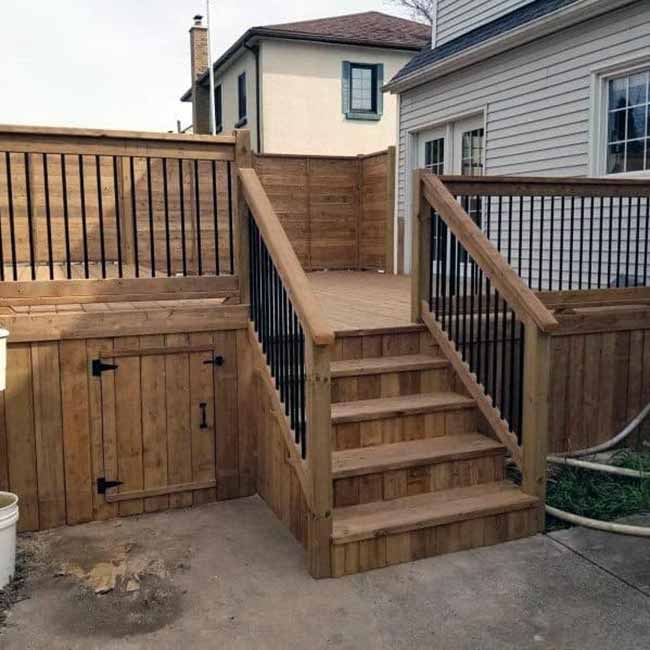
Plus, who says storage can’t be stylish? This elevated deck doubles as a storage space, with wood planks covering every inch for a rustic, cohesive look. And that little door? Pure convenience.
#6. Weatherproof Wonder: PVC Deck Skirting
Living in a rainy area? PVC or vinyl skirting is your best bet. They’re durable, waterproof, and perfect for any weather.
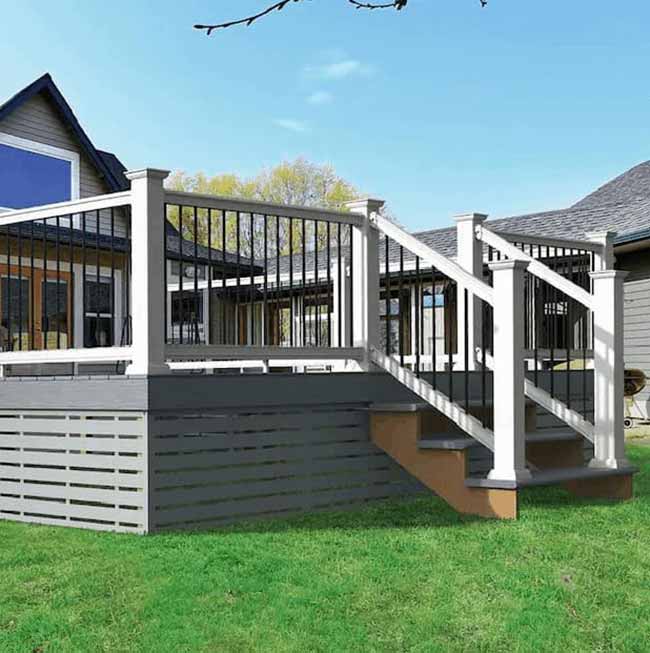
And the options? Endless. Let’s dive into a couple of the best PVC deck skirting ideas.
Check out these narrow horizontal slats, creating interest and airflow. They blend seamlessly with the deck and metal railings, creating a stunning outdoor space.
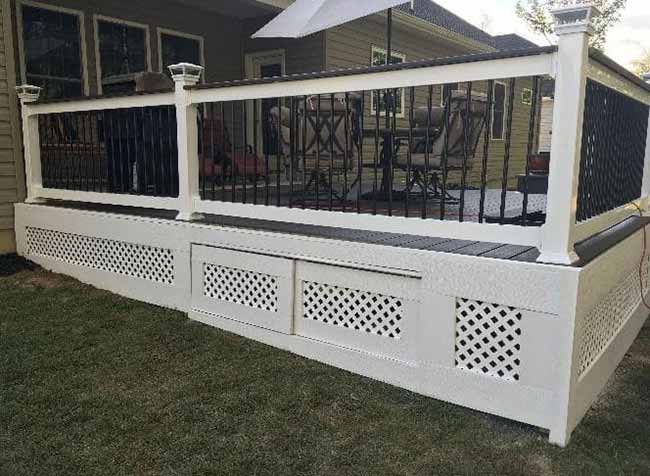
Or how about this lattice-patterned PVC skirting? It’s so realistic, you’ll swear it’s wood. Plus, those white borders? They add a touch of elegance while keeping critters out.
#7. Versatile Beauty: Composite Deck Skirting
Composite materials are decking royalty for a reason—they’re sturdy, weatherproof, and totally customizable.
And when it comes to skirting? They’re a dream. Just look at this box-type design, seamlessly blending with the deck for a cohesive look.
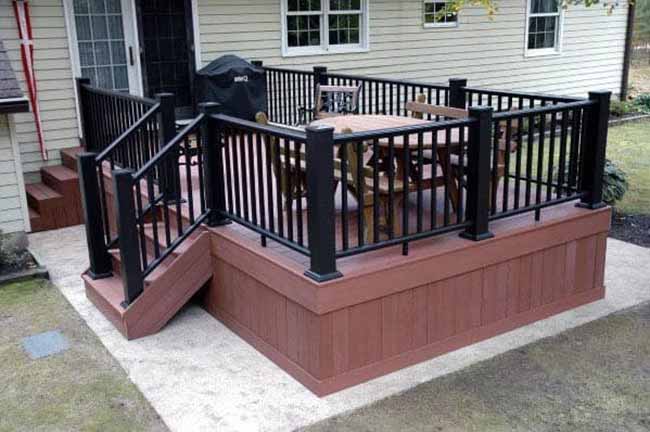
Pair it with a bold black railing, and you’ve got yourself a welcoming patio that’s as stylish as it is functional.
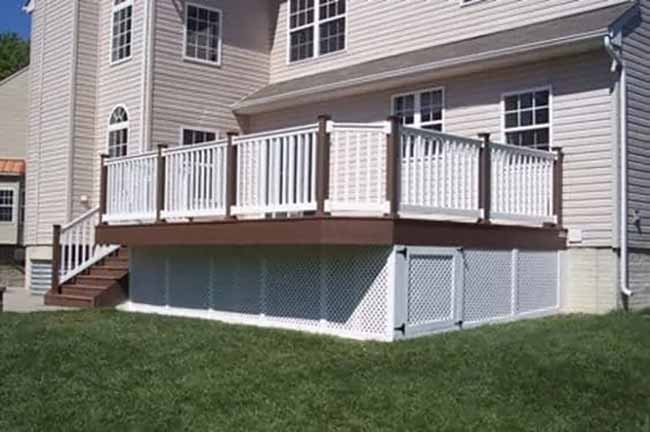
Need storage? Composite lattice skirting has you covered. It’s sleek, it’s sturdy, and it adds a touch of modern flair to any deck.
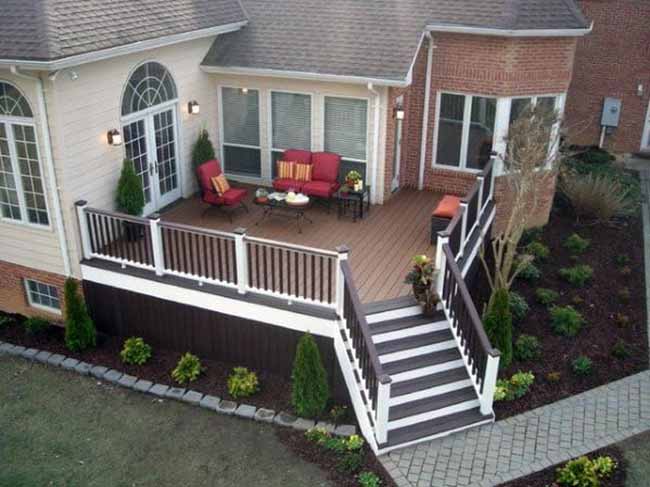
And who says your deck and skirting have to match? Embrace the contrast for an eye-catching look that’ll have the neighbors talking.
#8. Rustic Charm: Pallet Deck Skirting
Pallet slats aren’t just for shipping—they’re perfect for decking too. Durable, budget-friendly, and oh-so-charming.
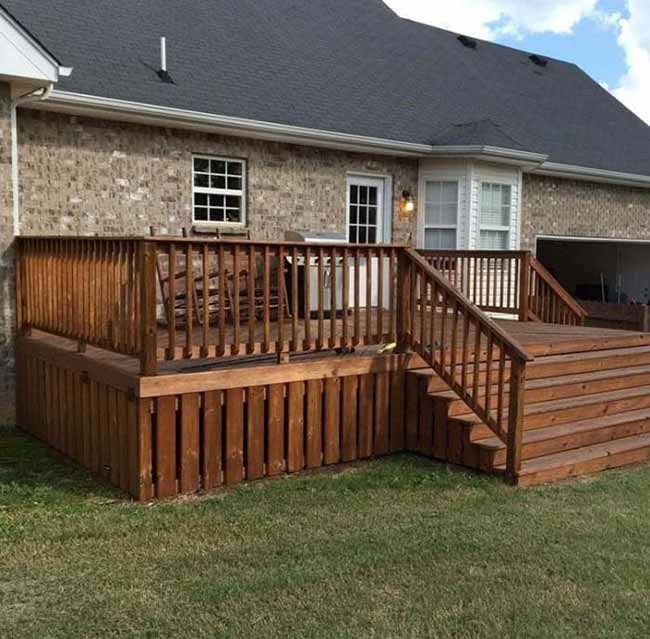
Their rustic texture adds warmth and dimension, contrasting beautifully with brick walls.
Leave small gaps for ventilation and a dimensional look that’s as practical as it is stylish.
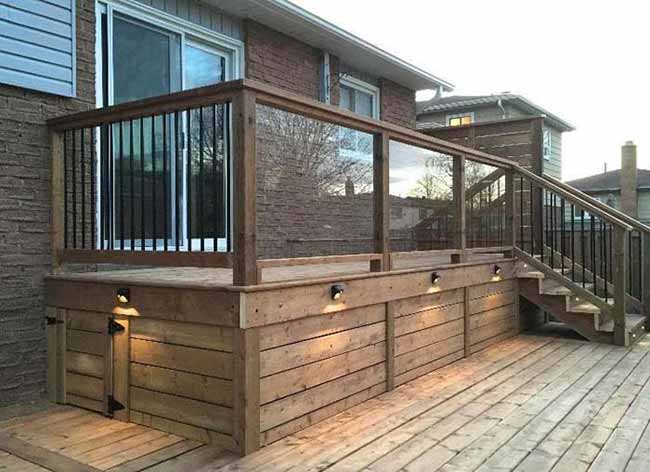
How to Build Wooden Deck Under Skirting:
And why stop at rustic? Add modern touches like built-in lights for a contemporary twist.
Wide horizontal slats create a tight, uniform look across the deck and skirt, adding to the rustic charm.
And for a modern twist? Swap out wood panels for fiberglass enclosures—it’s the perfect blend of old and new.
#9. Wildlife Barrier: Tall Deck Skirting
Living near forests or woods? Tall deck skirts are your best defense against wild intruders.
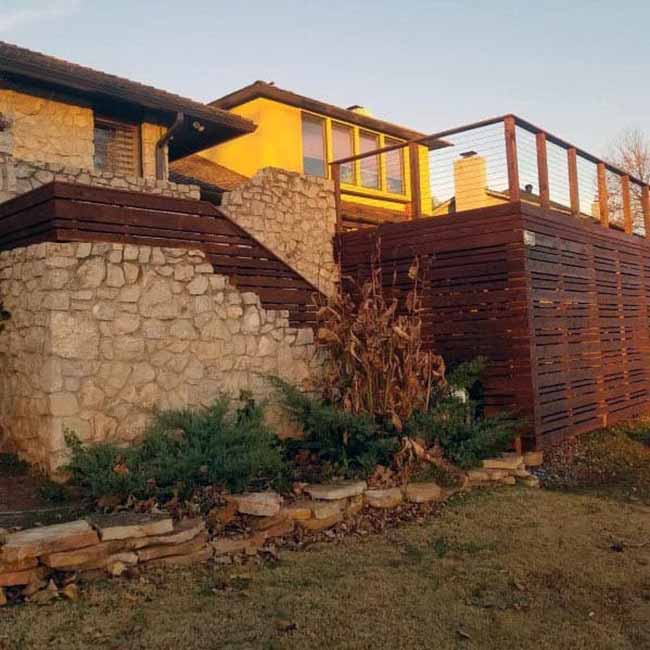
They’re not just for protection—they also add stability and continuity to your home’s structure, especially on uneven terrain.
Take this modern forest house, for example. Slim, dark-stained slats create a sleek, contemporary look that’s perfect for sloped ground.
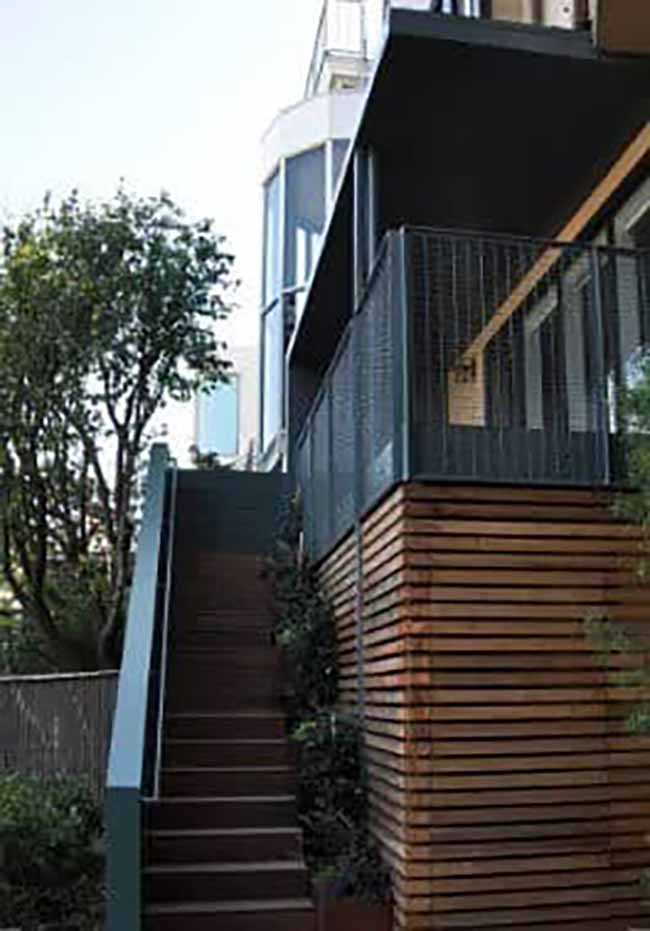
Paired with metal railings and concrete stairs, it’s a stylish solution for keeping critters at bay.
#10. Craftsman Chic: Deck Skirting for Traditional Homes
Craftsman-style homes deserve a deck skirt that’s just as timeless. Think stained wood, stone, or brick in natural hues.
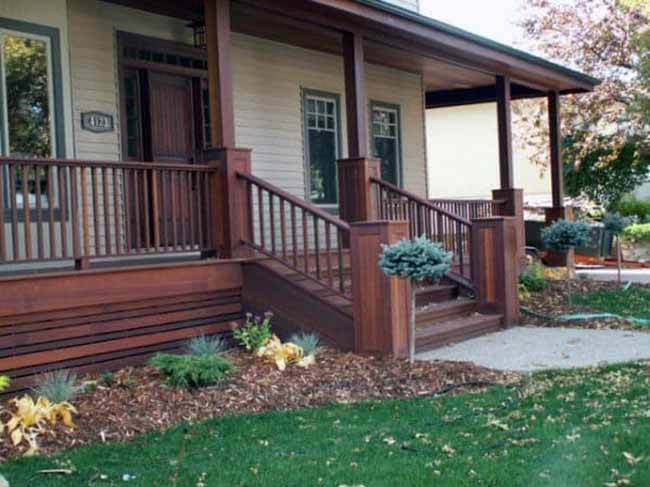
This classic craftsman skirt features horizontal wood boards, perfectly complementing the dark mahogany pillars and railings.
It’s all about creating an elegant contrast against the beige house walls.
#11. Solid and Stylish: Concrete Deck Skirting
When it comes to durability, concrete reigns supreme. It’s weatherproof, modern, and reliable—perfect for any outdoor space.
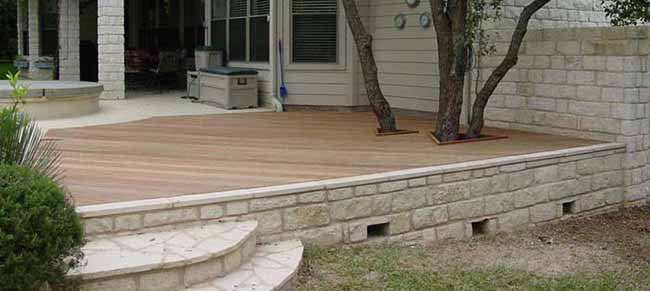
Just look at this free-standing deck, surrounded by grey cobblestone skirt. It’s sleek, it’s sturdy, and it adds a touch of sophistication to the patio.
And those fine horizontal lines? They’re the perfect imitation of painted wooden boards, giving this skirt a timeless look.
#12. Poolside Paradise: Skirting Ideas for Above-Ground Decks
Even above-ground pools deserve a stylish skirt. Not only does it unify the pool with the outdoor space, but it also adds storage and shade options.
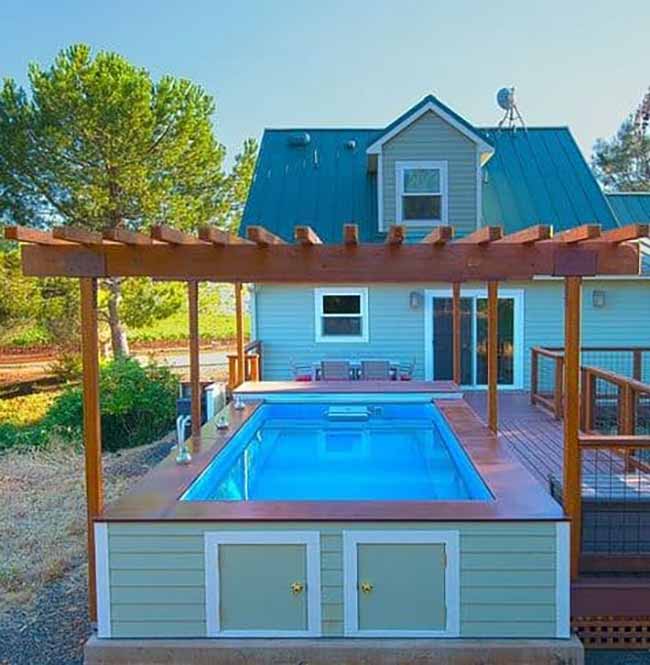
Take this zen pool area, for example. Wood lattice skirts the low-ground deck, creating a seamless transition from patio to pool.
And the pool itself? It’s surrounded by a matching wood skirt, providing support for the pergola and a handy storage spot.
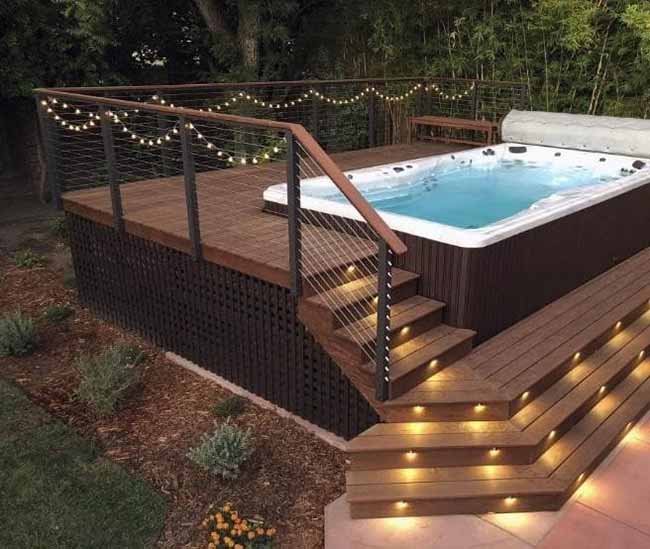
With mahogany hues and sleek metal accents, it’s a poolside oasis that’s as functional as it is beautiful.
Plus, those built-in lights? They add a touch of magic to an already enchanting space.
#13. Lightweight Elegance: Faux Stone Deck Skirting
Faux stones are a fantastic option for deck skirts. Made from polyurethane foams or veneers, they come in panels, offering both style and affordability.
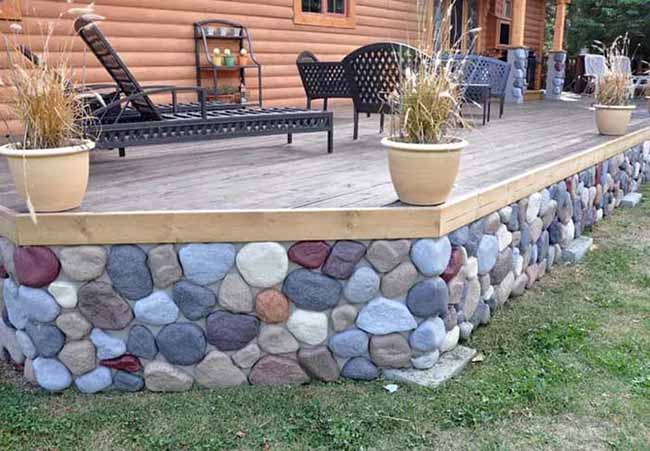
Just look at this example—a small investment that makes a big impact. Faux stone panels adorn both the walls and the deck skirt, adding exterior accents that elevate the overall curb appeal.
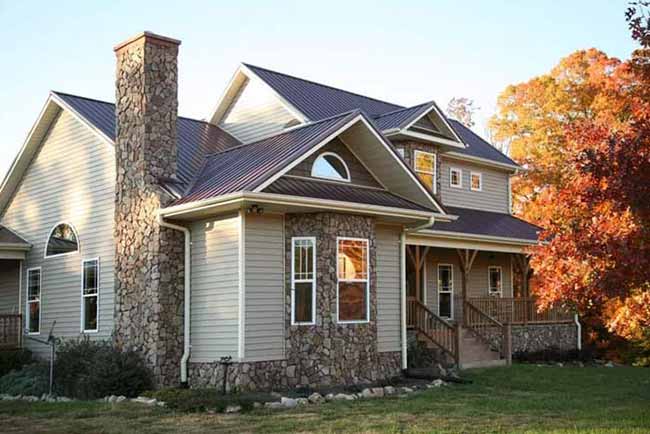
With earthy tones that blend seamlessly with neutral siding, it’s a simple yet effective way to give your home a unique touch.
#14. Modern Minimalism: Panel Skirting for Floating Decks
Floating decks are all about freedom and space. With no traditional supports or railings, they offer a contemporary, airy vibe.
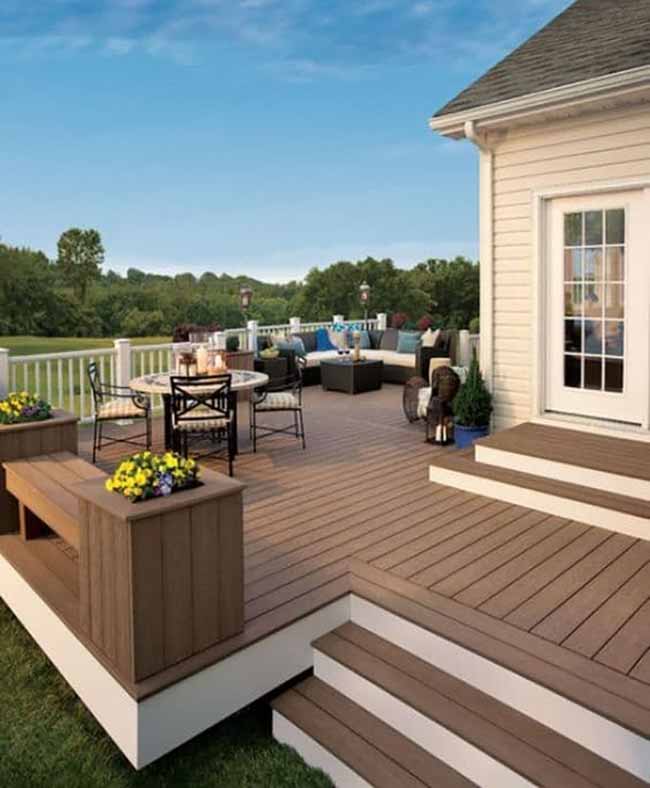
Check out this floating deck—it’s spacious, stylish, and enclosed with sleek white panels. Perfect for enjoying the open air without any distractions.
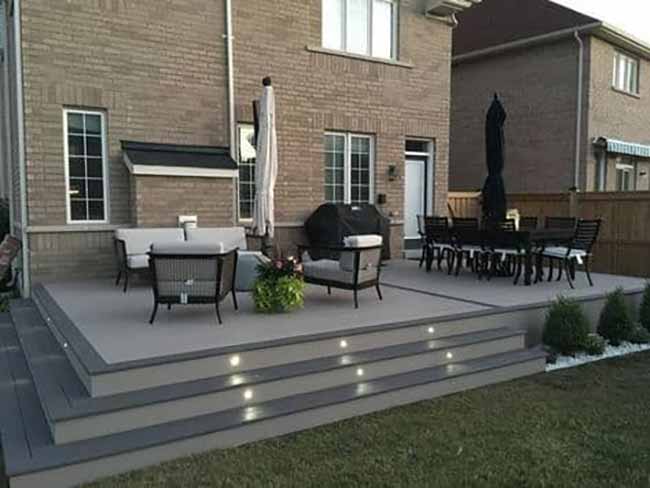
And who needs railings when you have LED lights? It’s modern minimalism at its finest.
#15. Rustic Charm: Cedar Deck Skirting for Cabin Vibes
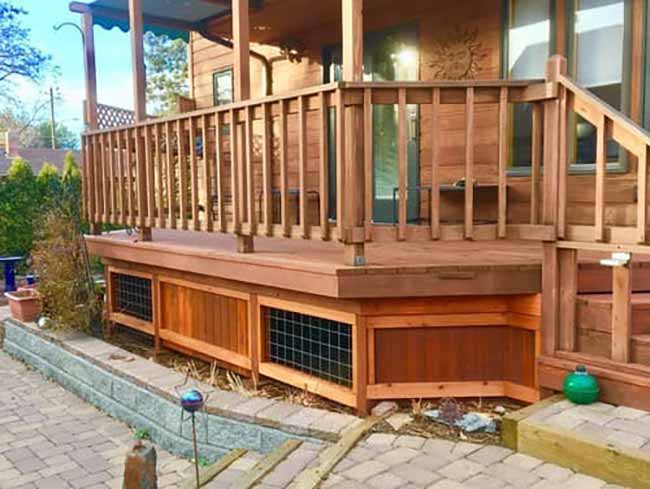
For farmhouse-style homes or cozy cabins, cedar is the way to go. It’s durable, beautiful, and adds a touch of rustic charm to any space.
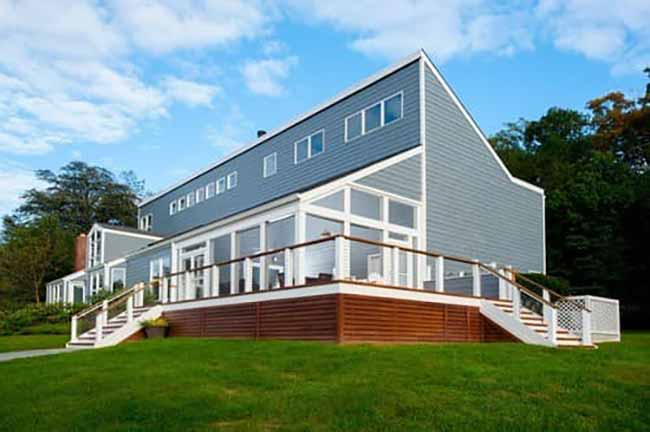
Take this cabin-style home, for example. The newly finished cedar skirt pairs perfectly with milky grey siding, creating a warm and inviting atmosphere.
And those cedar slats? They’re not just for looks—they also provide ventilation for the base storage, ensuring everything stays dry and well-maintained.
With a fiberglass enclosure and white wood posts, it’s the perfect blend of modern and rustic.
#16. Tailored Touch: Custom Lattice Deck Skirting
Sloping terrain? No problem. With wood lattice boards, you can create a seamless look for your deck, no matter the landscape.
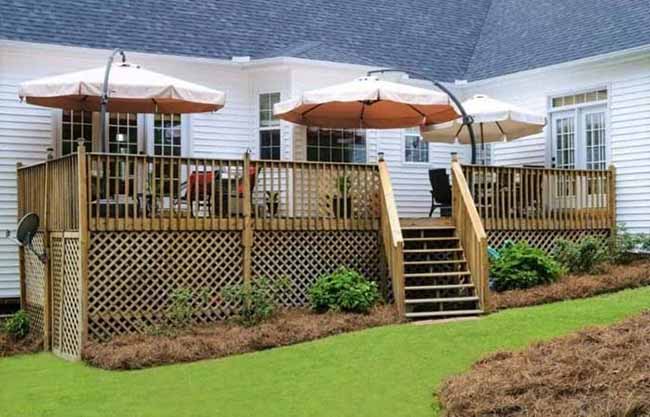
Not only do lattice panels offer ventilation and protection, but they also add visual interest, smoothing out any unevenness in the ground.
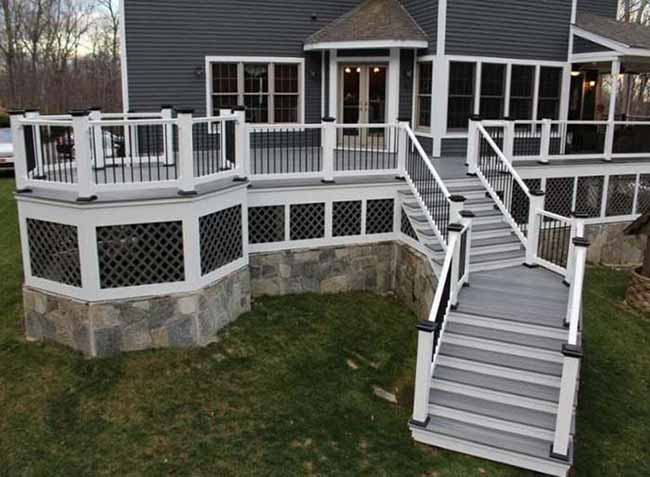
And with matching materials and colors, you can create an elegant, unified vision for your outdoor space. Grey, white, and black hues define each element, creating a cohesive look that’s as stylish as it is functional.
#17. Classic Elegance: Wood Panel Deck Skirting
When it comes to traditional deck skirts, lattice reigns supreme. But for an equally elegant option, consider wood beams—they’re perfect for rustic or modern homes alike.
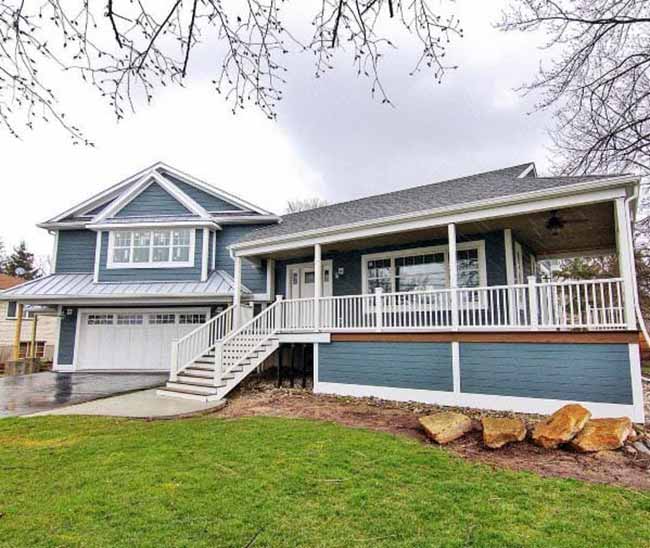
Whether placed horizontally or vertically, wood beams offer versatility and charm. Plus, with the right stains and paints, you can easily customize their look to suit your style.
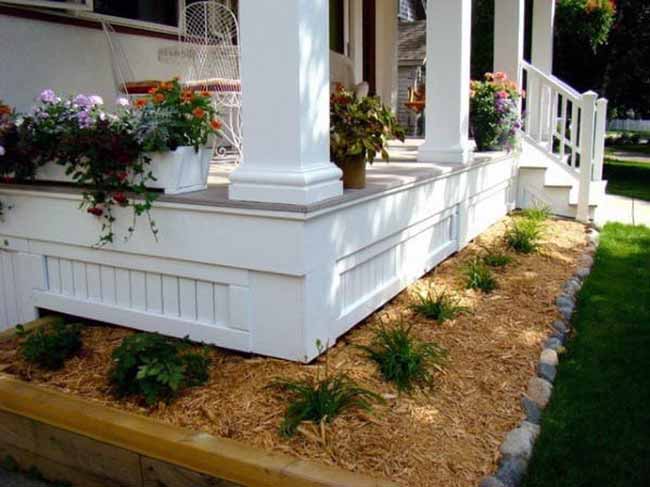
For a cohesive look, match the skirt to another major element of your deck, like the surface, pillars, or railings. It’s all about creating a harmonious outdoor space.
#18. Timeless Charm: Brick and Stone Deck Skirting
Nothing says traditional like brick or stone skirting. It adds character and durability to any deck, making it a favorite among homeowners.
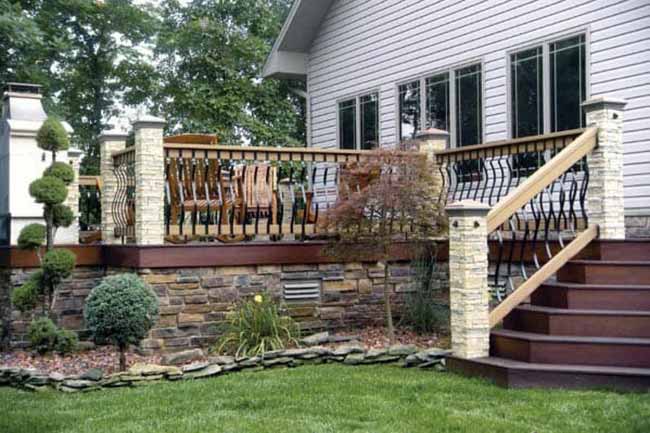
And with a variety of real and faux options available, it’s easy to achieve that classic look without breaking the bank.
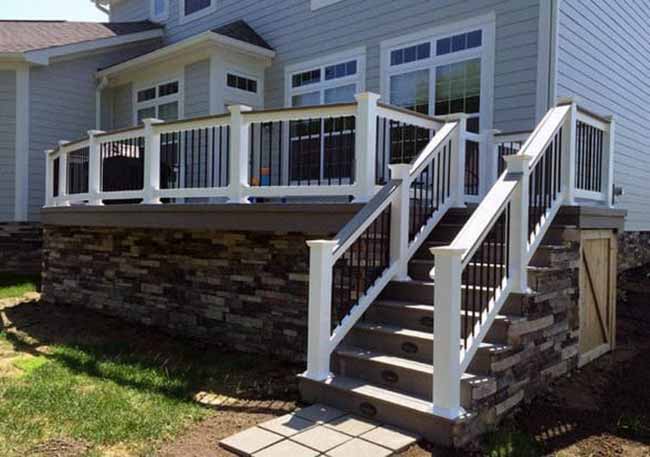
Take this charming idea with faux stones, for example. The earthy color palette perfectly complements the light grey siding, adding texture and charm to the exterior.
Faux stones are gaining popularity for their easy application, affordability, and lightweight nature—making them the perfect choice for any traditional deck.
#19. Functional Style: Deck Skirting for Storage
Who says your deck skirt can’t be practical too? Turn that unused space underneath into valuable storage with the right skirting.
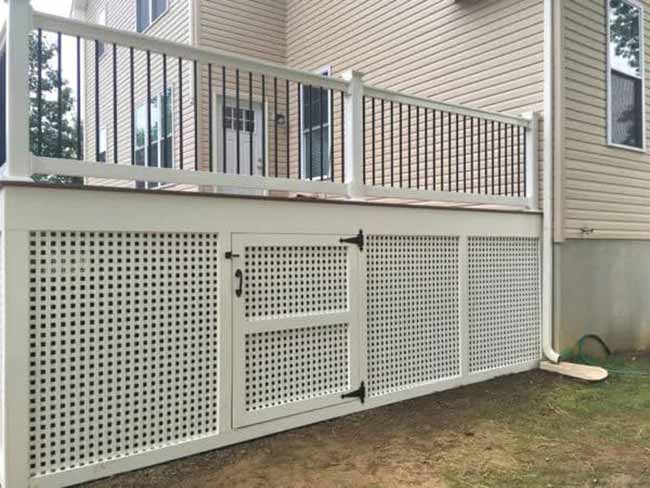
Forget lattice—opt for panels with ventilation holes instead. This side deck skirt features four panels, one of which is openable for easy access to your outdoor gear.
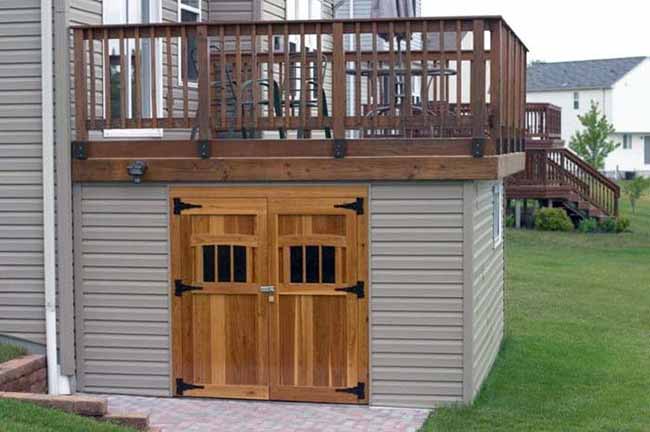
With a wooden railing that matches the skirt, it’s all about creating a seamless look that’s as functional as it is stylish. Plus, the trendy neutral grey of the composite boards ties it all together beautifully.
Deck Skirting: Can You Add It Later?
Deck skirting is like the icing on the cake for your backyard deck.
It’s the final touch that pulls everything together, giving your deck a sleek, polished look. And not just that—it also creates a handy storage space underneath, keeping your outdoor area tidy and organized.
But here’s the thing: Can you add skirting after your deck is already built? Maybe you didn’t think about it during construction, or perhaps you’re looking to upgrade your deck’s appearance later on. Either way, we’ve got the answers you need.
Adding Deck Skirting After the Fact
The good news is, yes, you can add skirting to your deck after it’s built. Since it’s usually one of the last steps in deck construction, adding it later is usually straightforward and doesn’t require much hassle.
Whether you opt for vertical or horizontal boards, or a decorative lattice, the installation process is pretty similar. You’ll attach the skirting frame directly to your deck’s existing frame, and you can do it all from outside the deck, making it a breeze to add whenever you’re ready.
Keeping Wildlife Out: The Role of Deck Skirting in Yard Protection
Let’s talk about how deck skirting can help keep unwanted visitors out of your yard.
During the summer, everyone loves spending time outdoors, especially on a nice deck. But what if you start attracting some uninvited guests? That’s where deck skirting comes in handy.
Underneath your deck is like a cozy hideout for critters like rats, mice, and even skunks. And if you leave it open, it’s an open invitation for them to move in!
So, how do you keep these critters away? The first line of defense is deck skirting. It’s like a protective barrier that blocks off the underside of your deck, making it less inviting for unwanted guests.
Lattice skirting is a popular choice—it looks nice and adds a cozy vibe to your deck. But if you’re worried about critters squeezing through, you can add some mesh to the backside for extra protection.
But wait, there’s more! If you live in an area with lots of burrowing animals, you might want to take an extra step. You can ask your deck builders to install wire fencing underground around the edge of your deck. This creates a hidden barrier that keeps pests from digging their way in.
And what about snakes? If you’re worried about them nesting under your deck, try putting gravel underneath or removing any big rock piles nearby.
But it’s not just the space under your deck you need to worry about—what about the deck itself? Squirrels love to explore and can be a nuisance. Here are some tips to keep them away:
Get an owl statue—it scares off birds and squirrels.
Keep your trash cans secure or move them away from the deck.
If you have bird feeders, consider removing or relocating them.
Set up a squirrel feeder in another part of your yard to distract them.
Try using deer repellent on your deck furniture.
Consider using a pest control ultrasound device—it can help keep pests away from both above and below your deck.
How Much Does It Cost to Add Skirting to Your Deck?
So, you’re thinking about adding some skirting to your deck, huh? Well, the price tag for this project can vary quite a bit.
On average, you might shell out around $3,500 for deck skirting. But hey, if you’re on a tight budget, you could go for a more affordable option, like wire mesh or recycled materials, which might only set you back about $250. On the flip side, if you’re going all out with fancy stone skirting for a big deck, be prepared to fork over $5,000 or more.
Now, when it comes to the nitty-gritty details, the cost can range from $3 to $50 per linear foot, depending on what kind of materials you’re using.
Let’s break it down a bit more:
Size Matters
The size of your deck plays a big role in how much you’ll spend on skirting. For instance, covering three sides of a 250-square-foot deck could cost you anywhere from $80 to $2,700 in materials alone.
Material World
When it comes to materials, the sky’s the limit. Wire mesh is on the cheaper end at $2 per linear foot, while fancy hardwoods and stone can climb all the way up to $55 per linear foot. Wood might run you $12 to $50 per linear foot, while plastic ranges from $17 to $35 per linear foot.
Labor of Love
Now, if you’re not keen on DIY, you’ll probably need to hire some help. Labor costs can make up a big chunk of your budget—up to 70%! Expect to pay around $45 to $100 per hour per worker for installation. It might take a few hours, especially for larger decks.
Permit Patrol
Oh, and don’t forget about permits! Depending on where you live, you might need to cough up $220 to $450 for a building permit before you can get started on your deck project.

